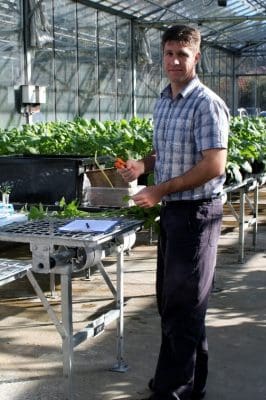GROWERS can help combat fungicide resistance by diversifying their disease control tactics to include strategies such as stubble management, according to researchers from the Centre for Crop and Disease Management (CCDM) in Western Australia.
Research agronomists Mike Ashworth and Leon Hodgson have carried out the research, supported by Curtin University and the Grains Research and Development Corporation (GRDC).

Researcher Mike Ashworth says a CCDM project has quantified how much time and heat is required to kill fungal pathogens on wheat stubble.
Dr Ashworth said that, following fungicide treatment of diseased crops, growers needed to ensure that any fungicide-resistant pathogens did not get a chance to infect following crops.
“Experience has shown that fungal pathogens, as well as weeds and insects, are rarely controlled using a single tactic and that fungicide over-reliance leads to resistance,” he said.
“The use of additional fungal disease management tactics will help prevent resistance from becoming an increasing problem and will also optimise crop yields.”
Dr Ashworth, who has conducted research into stubble management as a strategy to reduce disease loads, said laboratory work had recently quantified how much time and heat was required to kill fungal pathogens on wheat stubble.
“For example, pathogens will be killed by burning stubble for 40 seconds at 200°C,” he said.
“I have also used temperature probes to compare heat levels in windrows with those in standing stubble.
“This work has found that the burnt windrows retain high heat levels for much longer than burnt standing stubble, where the heat drops soon after burning begins.
“This research suggests that growers can effectively reduce the amount of disease inoculum between seasons by windrowing crop residues and burning these windrows.”
CCDM research is also measuring disease levels in WA crops and finding that wheat grown on tall retained stubble is showing the highest amount of leaf area infected by fungal diseases.
Growers are not always able to cut low at harvest and CCDM aims to determine the ideal height to cut stubble in order to best reduce pathogen levels.
Source: CCDM

HAVE YOUR SAY